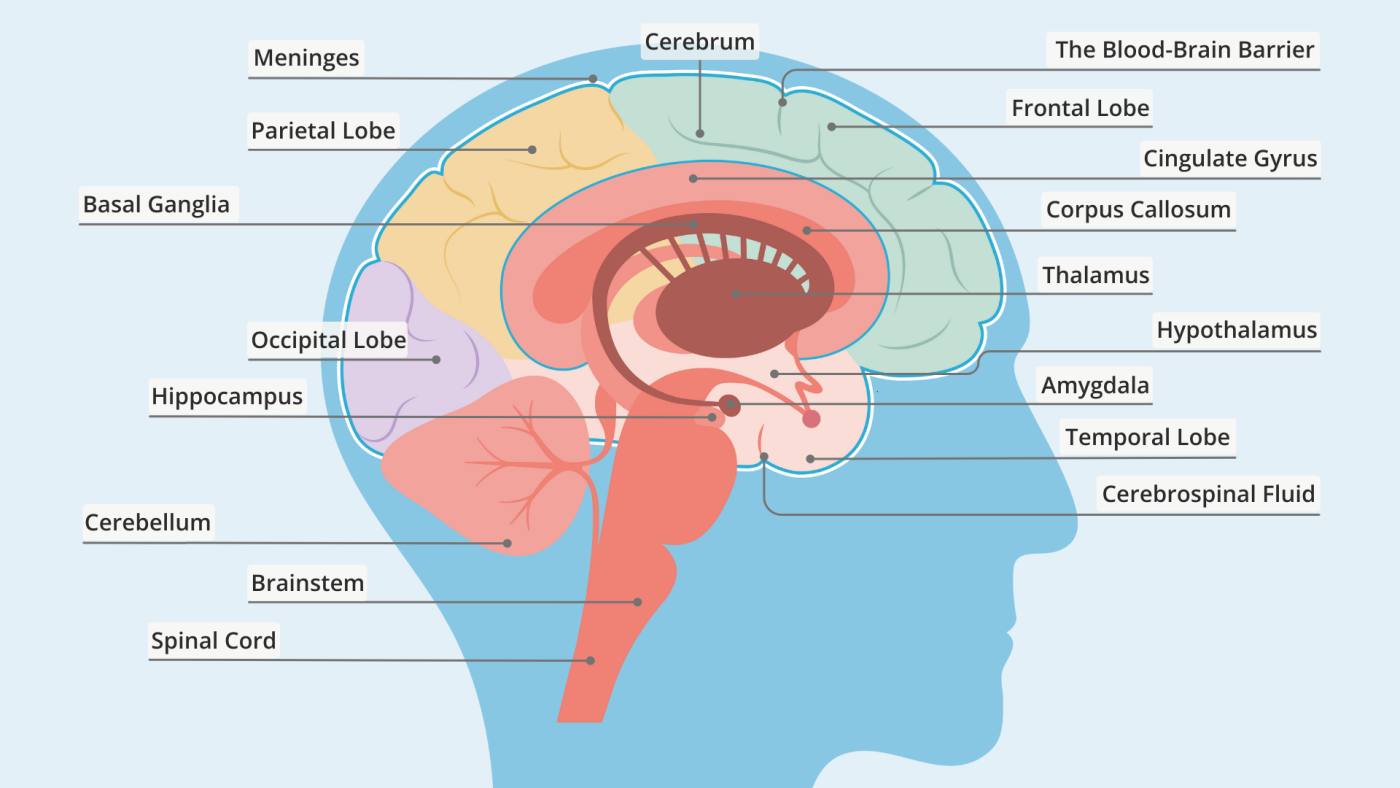Brain Anatomy
Brain Anatomy and the Role of CSF: Part 2
In the previous part of our series on Brain Anatomy and the Cerebrospinal Fluid (CSF), we explored the basic structure and function of the brain and how CSF is produced and circulates around the central nervous system. In this article, we will dive deeper into the significance of CSF in maintaining brain health and its connection with neurological diseases.
What is Cerebrospinal Fluid (CSF)? – Brain Anatomy

Cerebrospinal Fluid (CSF) is a clear, colorless liquid that surrounds the brain and spinal cord. It plays a crucial role in cushioning the brain, removing waste products, and maintaining a stable environment for the nervous system. CSF is produced by the choroid plexus in the ventricles of the brain and circulates through the subarachnoid space, providing mechanical protection to delicate neural tissues.
CSF Composition and Function
CSF is composed primarily of water, electrolytes, glucose, and small amounts of proteins. Its primary functions include:
- Cushioning the Brain: CSF helps to absorb shocks, reducing the risk of brain injury during head trauma.
- Waste Removal: CSF assists in the removal of metabolic waste products from the brain, ensuring that harmful substances do not accumulate.
- Nutrient Delivery: CSF transports essential nutrients and ions that are vital for brain function and cellular health.
- Regulation of Intracranial Pressure: CSF helps to maintain balanced pressure within the skull, preventing conditions like hydrocephalus.
How Does CSF Circulate in the Brain? – Brain Anatomy
The circulation of CSF within the brain is a dynamic and regulated process. After being produced in the ventricles, CSF flows through several key structures:
- Lateral Ventricles: CSF is initially produced in the lateral ventricles, where it begins its journey through the brain anatomy.
- Third Ventricle: The fluid moves through the interventricular foramen into the third ventricle, located at the center of the brain.
- Fourth Ventricle: From the third ventricle, CSF flows into the fourth ventricle, where it exits the ventricular system and enters the subarachnoid space surrounding the brain and spinal cord.
Disorders Related to CSF
Disruptions in CSF production or circulation can lead to a variety of neurological disorders. Some common conditions associated with CSF include:
- Hydrocephalus: A condition where an abnormal buildup of CSF causes increased pressure within the skull. It can result in brain damage if left untreated.
- Meningitis: Inflammation of the protective membranes around the brain and spinal cord, often caused by infection, which can impact the flow and composition of CSF.
- Normal Pressure Hydrocephalus (NPH): A type of hydrocephalus that occurs without increased pressure, often affecting elderly individuals, leading to symptoms like memory problems and difficulty walking.
CSF’s Role in Brain Health and Disease – Brain Anatomy
Maintaining proper CSF circulation and composition is essential for overall brain health. An imbalance in CSF can lead to neurological complications, which may result in cognitive decline, motor dysfunction, and even death if untreated. Advancements in medical research continue to explore how we can better understand CSF’s role in neurodegenerative diseases, such as Alzheimer’s and Parkinson’s disease.
CSF as a Diagnostic Tool
CSF analysis is a critical diagnostic tool in neurology. By analyzing the composition of CSF, doctors can gain insights into a patient’s brain health and detect abnormalities that may indicate conditions such as infections, autoimmune diseases, or cancer. For instance, the presence of elevated protein levels in CSF may suggest an infection like meningitis, while abnormal cell counts can signal multiple sclerosis.
Conclusion: The Critical Importance of CSF in Brain Function – Brain Anatomy
In conclusion, cerebrospinal fluid (CSF) is a vital component of the brain’s anatomy. Not only does it protect and nourish the brain, but it also plays a crucial role in diagnosing and treating neurological disorders. As we continue to unlock the mysteries of CSF, we gain a deeper understanding of its significance in both brain health and disease prevention.
Understanding the intricate relationship between brain anatomy and CSF is essential for anyone interested in neuroscience, neurology, or brain health. Stay tuned for more in-depth discussions in future parts of this series.
By focusing on the critical role of CSF in brain function, this article optimizes the brain anatomy topic with SEO-friendly keywords and headers like CSF, cerebrospinal fluid, and brain health to attract relevant traffic from individuals interested in neuroscience and related fields.
Các sản phẩm diệt khuẩn từ thiên nhiên:
https://khanhvietnatural.com
Hãy học cách phòng ngừa thay vì bệnh rồi mới tìm cách chữa trị. Tham khảo 2 tập của sách Ayurveda, link mua sách tại:
http://huynhtruayurveda.com

Câu hỏi thắc mắc, vui lòng liên hệ:
Facebook: https://www.facebook.com/LUYENPHATAM






